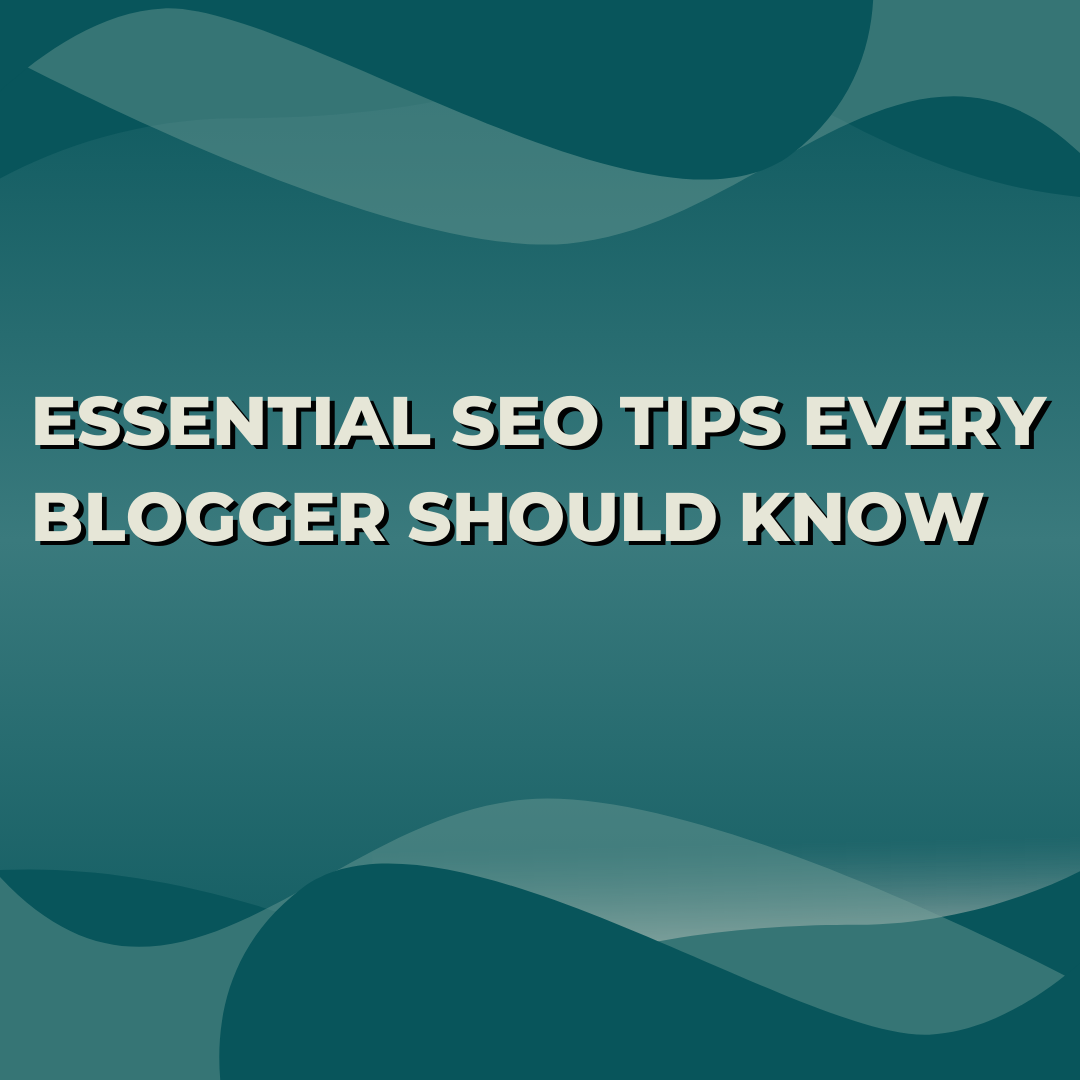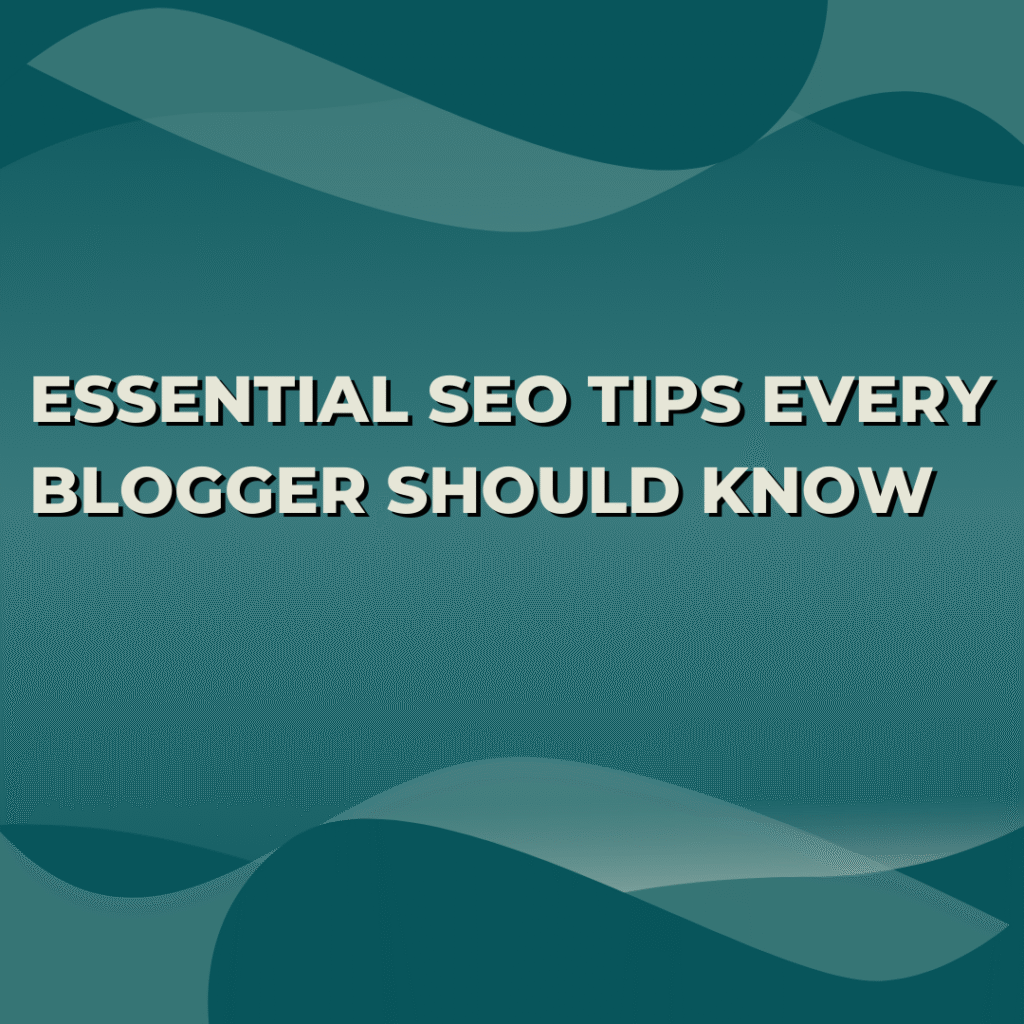Essential SEO Tips Every Blogger Should Know
As a professional blogger or a novice blogger, this would mean the difference between success and failure in a blog by learning and adopting the appropriate methods of SEO. SEO or Search Engine Optimization is the craft and science of getting your blog to be visible in search engines such as Google and organic traffic and eventually increase your audience. The best content may not be found without proper SEO even. Essential SEO Tips Every Blogger Should Know. This tutorial will take you through basic SEO tricks that every blogger must be aware of in an attempt to increase the performance of your blog, get traffic and create your own base of loyal followers.
1. Learn Your Audience and Keywords
The key to successful SEO before you start writing is to know who is your target audience and what they are searching. The art of researching keywords is defined as the research of the words and phrases typed into the search engines by your possible audience. Such tools as Google Keyword Planner, Ahrefs, SEMrush, or even free tools such as Ubersuggest can assist you to find the keywords that are relevant and have a good percentage of search volume and competition.
Hint: Pay attention to long-tail keywords- certain phrases, which are less competitive and, at the same time, highly targeted. As an example, do not use blogging tips but use essential SEO tips to beginner bloggers. These will bring visitors who will find it easier to interact with your content.
2. Develop Quality, Premium Content
Content that is involved in search engines put more emphasis on content that makes a true difference. Good content implies that it is informative, interesting, and it provides the answers to the questions of the reader in a thorough manner. Become a recognized authority in your field of specialization by presenting something uncommon, supported by data or experience. Fluff and keyword stuffing are bad things to avoid as they are harmful to your rankings.
Hint: write in a more conversational style that is easy to understand. Separate your material into easily digestible parts by use of subheadings, bullet points, and images.
3. Optimize On-Page SEO Elements
On-page SEO is about optimizing the actual blog post so it ranks higher in search results. The following aspects indicate:
Title Tags: The blog post title should contain the main keyword, which serves to entice the user to click on it in a search engine.
Meta Descriptions: Summarize your posts in 150 to 160 characters to describe the post and entice the user to click through from the search results.
Headings (H1, H2, H3): Use heading tags for structuring your content and input relevant keywords.
URL Structure: Simple and clean URL structure in conjunction with keywords is fitting (i.e. yoursitename.com/seo-tips-bloggers).
Alt Text for Images: Describe images with keywords so that search engines may recognize them and, in turn, enhance image search rankings.
4. Make Your Blog Mobile-Friendly
With more than half of all web traffic flowing from mobile devices, having a mobile-friendly blog is no longer negotiable. Responsive design means your site can adapt to any screen size-and provide a seamless user experience. It also means Google will rate your mobile-friendly site higher.
Tip: Use Google’s Mobile-Friendly Test tool to check your blog for mobile usability, and rectify any problems that arise.
5. Improve Page Speed and Load Time
Happy visitors and fewer bounces, this is what fast-loading pages bring. Page speed is one of the factors now accounted for in Google ranking; therefore, optimizing the page speed of your blog should be a priority. This can be accomplished by compressing images, enabling browser caching, minifying CSS and JavaScript files, and using a good hosting provider.
Tip: Check out Google PageSpeed Insights or GTmetrix for an analysis of your blog’s performance.
6. Internal and External Link Building
Linking strategically within blog posts will aid search engines in crawling the website and determining its content hierarchy. Internal links can be used to connect related articles and keep visitors browsing for a while. Outbound links to credible sources will enhance your blog credibility.
Tip: Avoid over-linking, only link where it is relevant and adds value for your reader.
7. Use Social Media for SEO
Social media signals alone may not affect your position on search results; however, the more you promote your work through Facebook, Twitter, Instagram, and LinkedIn, the more visibility it receives, and the more traffic it drives. An audience that engages with your content will link back to it, thus enhancing its SEO cred.
Tip: Use catchy headlines and appealing images that will be shared when posted socially.
8. Use Analytics to Track and Improve
Crucial for monitoring a blog’s performance using tools like Google Analytics and Google Search Console; track keywords that deliver maximum traffic, posts with maximum engagement, and so on and so forth.Essential SEO Tips Every Blogger Should Know. Culling information from these metrics, you can adjust and refine your SEO strategy.
TIP: Create a goal and conversion tracking system so you can measure how effective your SEO has been.
9. Always Update and Keep Content Fresh
Search engines always prefer sites that update their content frequently. Update your old blog posts with new information, optimize for keywords, and fix broken links. This helps keep your blog relevant and can increase rankings.
TIP: Conduct periodic content audits to check which posts need updating.
10. Keep User Experience (UX) at the Forefront
SEO, as they say, is not just about search engines but a beautiful experience for your readers. Make sure the readers find their way through your blog easily and that there is no unattractive ad or pop-up interrupting the reader experience.
TIP: Set clear CTAs, working with readable fonts, adequate white space, etc.
11. Voice Search Optimisation
With the increasing trend of smart assistants like Alexa and Google Assistant, it has always been vital to optimize the content.
12. Use Schema Markup
Schema markup is a coding technique that enables search engines to comprehend your website content better, which is further enhanced by rich snippets in your search listings (like star ratings, FAQs, etc.).
Tip: Use schema for articles, reviews, FAQs, and events to enhance your visibility within search results.
13. Avoid Duplicate Content
This type of content creates problems for search engines and could hurt your rankings. Each blog post needs to be unique, though canonical tags can work in indicating which one is legal, so be sure to use these as necessary.
14. Build a Robust Backlink Profile
Backlinks coming from authoritative and relevant websites breed credibility in the eyes of search engines. Get started with guest blogging, outreach, plus shareable content that naturally attracts backlinks.
15. Use SEO-Friendly Blogging Platforms and Plugins
The right platform can really streamline your SEO process. An example is WordPress; it has plugins, like Yoast SEOor Rank Math, that will help you in optimizing your posts.
Closing the Loop
While turning into a full-fledged learning process about SEO, with just these basic guidelines, every blogger can improve the visibility of his blog. The readers can be increased and develop a good online presence. But remember, SEO isn’t something that is achieved overnight; this takes consistency and quality in the content and being user-centric in strategy for long-term growth.



